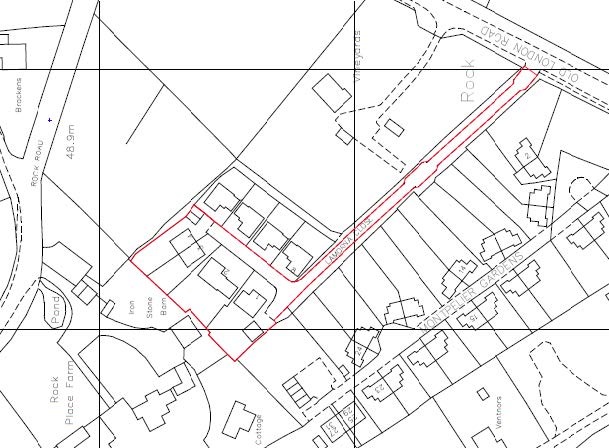Guidance
Ownership Certificates
All applications for planning permission must be accompanied by a certificate confirming that either the applicant is the sole owner of the land to which the application relates or that the appropriate notice has been served on any person who is an owner of the land or a tenant. Section 65(5) of the Town & Country Planning Act 1990 says that a local planning authority shall not “entertain” any application for planning permission where these requirements have not been satisfied.
The term 'owner' means a person having a freehold interest or a leasehold interest, the unexpired term of which is at least seven years. There can therefore be more than one owner (for example, the landlord and any tenants).
When the landowner has been notified by the applicant, the applicant is required to confirm this to us by submitting one of a choice of four ownership certificates with their planning application.
Types of ownership certificate
There are four ownership certificate options. The applicant must complete and submit only one of these certificates with their planning application.
Certificate A
- Completed if the applicant is the only owner of all the land within the boundaries of the application site. If the applicant is not the only owner then they must complete one of the following alternative certificates.
- If the application is being made in the name of two people, then Certificate A will still be valid provided that no-one other those two people is an owner of the land.
Certificate B
- Completed if the applicant knows the names and addresses of all the other owners of the land involved in the application.
- The applicant has to serve a notice on the owner(s) that they know the names of, telling the owners that they are making the planning application.
Certificate C
- Completed if the applicant knows the names and addresses of some, but not all, the other owners of the land involved in the application.
- The applicant has to serve a notice on the owner(s) that they know the names of, telling the owners that they are making the planning application.
- The applicant has to advertise in the local press the fact that they are making the application and do not know the names of the owner(s) of some or all of the land.
Certificate D
- Completed if the applicant does not know the names and addresses of any of the other owners of the land involved in the application.
- The applicant has to advertise in the local press the fact that they are making the application and do not know the names of the owner(s) of some or all of the land.
What happens if I submit an incorrect certificate?
If a certificate is inaccurate, we will not deal with the application any further. We will cease work on it and cannot lawfully determine it one way or the other.
If a local planning authority either ignores a defect in an Article 13 certificate or is unaware of this and proceeds to determine an application and grant planning permission, then any permission granted will be invalid and there would be a real risk that the High Court would quash the permission if any person aggrieved by the grant of the permission brought judicial review proceedings.
Land ownership disputes
When a situation arises where someone disputes whether the applicant owns all or any part of any application site, we may ask the applicant and/or the objector for confirmation or evidence of ownership. We do not have jurisdiction to determine boundaries and will normally work on the basis that the Land Registry records are definitive unless there is written agreement between the neighbouring owners as to where the definitive boundary lies.
Provided that the indicative boundaries on the Land Registry records show all of the land as being within the applicant’s ownership then we will accept the Article 13 certificate as being accurate, even if someone else claims that they own part of the land. This is because the Council does not have jurisdiction to determine disputes about land ownership.
One way of addressing a dispute over ownership is for the applicant to serve notice on the neighbour before the application is made. This should be accompanied by a letter to the neighbour stating that this is without prejudice to the applicant’s assertion that the neighbour is the owner of the disputed land. The applicant should then submit the application again after serving the notice to their neighbour with certificate B completed. This would enable the planning application to be decided but any permission granted would not override the property rights of the neighbour should they subsequently prove to be the land owner.
Example location plan
In this example location plan, the site has been edged in a block red line and continues along a private or non-adopted road. The line stops where the public highway begins.

